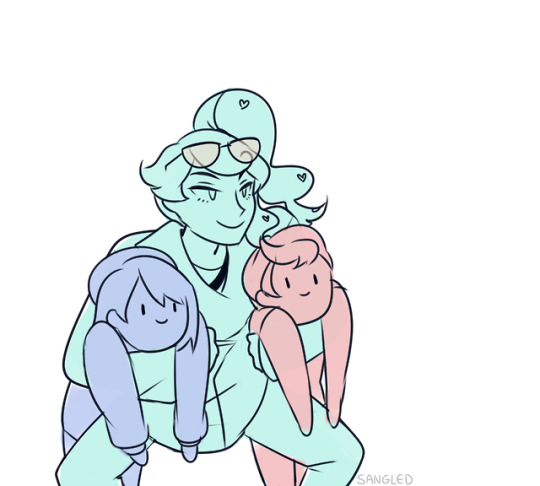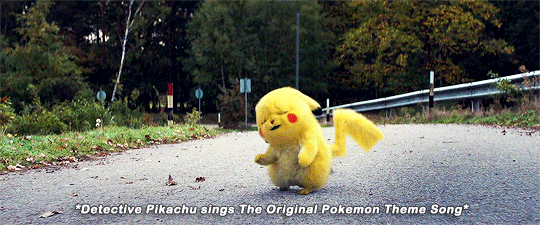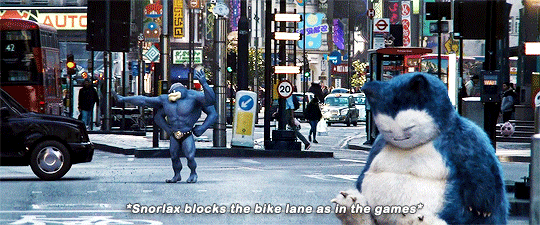Text
Little things that help moods:
- getting enough sunshine
- opening the curtains
- eating regular meals
- short walks with your favourite music
- don’t stay up until 3am
- don’t try to relate to tumblr text posts
- get off tumblr/social media if it’s unhealthy
- shower
- don’t stay in bed the whole day
- plan out your day
- listen to music
- change your clothes
- set yourself small goals
- say yes to fun events
- drink water, it takes 5 seconds
- talk to a close friend
- remind yourself: a bad mood can lie to you
- you’re not unwanted or hopeless
- you deserve love so be nice to yourself
105K notes
·
View notes
Text
BPD Symptoms and Features
I received an anonymous message that asked what are the symptoms of Borderline Personality Disorder (BPD).
To answer the question, I decided to make a separate post because this is complex question that is very important for awareness and education purposes.
BPD has been known to be an extremely complex, debilitating, condition overall. For short, BPD is a chronic mental disorder characterized by emotional hypersensitivity and dysregulation, resulting in unstable behaviors, relationships, and the sense of self/identity. As it is a chronic disorder, it cannot be “cured,” and though symptoms may be managed through treatment, and it has a high rate of improvement, functional difficulties have been shown to persist.
About 1-2% of the population has BPD. To get a better picture, that makes it about as common as red hair. Of this percentage, 8 out of 10 of these individuals attempt suicide an average of 3 times, while 1 out of 10 complete it. 20% of psych hospitalizations are BPD patients (x).
Personality describes the enduring, characteristic ways of individual people across life and various contexts, such as behaviors, emotions, thought patterns and mental processes (cognition), perception, and other internal/external reactions.
As we age, it clearly develops and alters, but still remains consistent. These patterns are persistent across life– we don’t suddenly start behaving, feeling, thinking, perceiving and reacting like another person.
A personality disorder affects these areas of someone, causing internal and external symptoms within behaviors, emotions, cognitions/mental processes, and perceptions. This occurs in one’s every day life and disrupts the typical interacting and functioning of an individual.
Rather than mood disorders in which they occur as episodic moods changes, personality disorders occur as the individuals base of development.
BPD’s symptoms and reactions revolve around three components:
1. Emotional hypersensitivity: As stated by Dr. Linehan, “[people with Borderline Personality Disorder] are like people with third degree burns over 90% of their bodies. Lacking emotional skin, they feel agony at the slightest touch or movement.”
This is referring to what typically does not trigger, stimulate, or upset people, may instantly do so to someone with BPD, whether it is environmental, interpersonal, or an inner state. Seemingly mundane occurrences can trigger symptoms.
2. Emotional intensity: This is referring to how the emotional reactions in BPD are so instant and extreme to the point of affecting the general functioning of someone with BPD. In response to a “minor” hypersensitive reaction, they may instantly experience various physiological and emotional reactions. Typical reactions are described as triggering depression instead of sadness, humiliation instead of embarrassment, rage instead of anger, and euphoria instead of excitement/happiness.
3. Slow return to emotional baseline: Emotions not only react easily, quickly, and intensely, but are also extremely dysregulated and take longer to return to a “normal” emotional baseline– that is, for someone to “come/calm down” from an emotion.
BPD is caused by a combination of genetic/biological, environmental, and psychological factors. A few of these include:
-In response to stress, anger, and anxiety, people with BPD have been shown to have an elevated cortisol response, which has indicated a hyperactive hypothalamic–pituitary–adrenal axis response (a stress response).
-The hippocampus of those with BPD is smaller in volume, which has functions linked to: emotional reactions, memory, decision making, learning and developmental ability, and so on.
-The amygdala is smaller in volume and hyperactive in people with BPD, which has functions linked to: memory, decision making and instincts, emotional responses, ability to comprehend consequences, and social interaction
-The prefrontal cortex is less active in BPD, which helps calm down and regulate emotions and reactions. This was especially shown in reactions to abandonment.
-Emotional reactions shown to fire off 20% longer compared to those without it
-And other factors (there is a heretibility factor of nearly 70%, and BPD can be reinforced through trauma and environmental factors, etc).
(x) (x)
Mainly quoted from the American Psychiatric Association (APA) and other areas of research, a guideline of the main symptoms used to diagnose includes:
1. Persistent depressive symptoms: chronic feelings of emptiness, hopelessness, frequent feelings of being miserable and down, pervasive shame, feelings of inferiority, pessimism about the future, and extreme difficulty recovering from such symptoms
2. Anxiety based symptoms: Tenseness, panic, nervousness, persistent worries, apprehensions, feelings of “falling a part or losing control”
3. Anger/rage symptoms: Extreme rage and discomfort in response to ‘minor’ slights/remarks, situations, or events, unbearable discomfort and irritation, antagonism, and aggression
4. Identity and self based symptoms: Markedly impoverished, poorly developed, and unstable self-image, unstable and radical behavior and/or appearance changes, excessive self-criticism, lack of direction and control with goals, values, morals, opinions, aspirations, and choices.
5. Interpersonal symptoms: Namely unstable attachment patterns and extreme reactions to/preoccupations with real or perceived abandonment, rejection, and criticism, marked by distrust, a lack/loss of autonomy, dependency, feelings of intense grief and humiliation, distorted perceptions and empathy, which is prone to negative bias and outlook
6. Impulsive and/or reckless based symptoms: (Impulsive) sense of urgency to engage in impulsiveness, intrusive thoughts and urges for a relief of emotional turmoil, acting on the moment in response to stimuli, acting without plan or consideration, difficulty establishing/following plans, and so on. AND/OR (Reckless) a lack of care for well-being, lack of concern for one’s limitations and denial of the reality of personal danger, unnecessarily and without regard to consequences and outcomes, such as engagement in reckless behaviors such as substance abuse, reckless driving, spending, sex, etc..
7. Thought pattern based symptoms: Splitting and idealization/devaluation (x)
8. Suicidal ideations (suicidal beahviors, preoccupations with suicide, role playing, planning) and self-harm (e.g. cutting, burning, bone breaking, bruising)
9. People with BPD experience transient reactions of paranoia and dissociation. This may include reactions with psychotic-like symptoms (meaning symptoms that lack reality): hallucinations, delusions, body dysmorphic figures, and so on, in response to an intense emotional reaction.
10. Characteristics of the emotions: As a result of the the hypersensitivity, intensity, and slow return to baseline, they frequently occur as a reaction to an outside stimulant, an inner state, and the environment. The emotions are quick happening, easily aroused, and intense. Reactions usually last for hours at a time, but spikes of emotions may occur for a few minutes, and other reactions may extend to days.
They may shift between extremities throughout the day, from rage, to euphoria, to panic, to depression.
As mentioned, mundane occurrences may trigger symptoms, whether it is a brief separation, a perceived abandonment, or minor slight.
Other times, symptoms can remain more persistent, like depressivity.
With this said, there are various other symptoms and features that occur in BPD that are not included on a criteria or the main symptoms. Here are some findings and observations of BPD.
IMPORTANT NOTES AND DISCLAIMERS:
Each person with the disorder is an individual. Don’t use these symptoms as assumptions.
They are rather a simple guideline and have been shown through observation and research
Others without BPD can obviously display/relate to some of this from time to time. Everyone can have trouble sleeping, be impulsive, and so on. For another example, while everyone is going to dislike abandonment, symptoms of BPD revolve around the mentioned intense grief stages, hypersensitive reactions to minor incidents (brief separation), distorted perceptions, and such. Please note it’s completely different than that. This is a chronic disorder that disrupts one’s every day functioning.
BPD is notorious for having symptoms that seem to overlap with other mental illnesses. Depression due to a depression disorder, fear of abandonment/rejection due to social anxiety, or sensory issues due to autism, etc., does NOT warrant a BPD diagnosis. The patterns and ways the symptoms present themselves are entirely different.
This post is not a checklist. While much of what is written in the main symptoms was copied exactly from the APA alternative criteria, as well as from research on the symptoms, this is a compilation of research for awareness/education purposes since not many know about it, how to deal with it, and what to expect. Regardless, a clinical criteria cannot correctly be used in a manner of just checking it off.
I simply don’t want this to be confused and used for anything other than what it is.
11. Distorted and irregular eating patterns (e.g. reduced food intake, impoverished diet)
12. Sleep deprivation or irregular sleeping patterns, resulting in too much or too little sleep
13. Frequent flashbacks and/or nightmares based on abandonment fears, traumas, or other symptoms
14. Very high numbers of people with BPD have been shown to have various other physical conditions and difficulties, which are specifically: high blood pressure, diabetes, chronic migraines, back pain, stomach aches, arthritis, and fibromyalgia (National Institute of Mental Health (NIMH)).
15. Nociception (pain tolerance) differences: Studies show alterations in acute pain processing in those with BPD. They may have hypersensitivity to acute pain. On the other hand, it was at times the complete opposite; there would be hardly any response to acute physical pain at all.
Additionally, they may have a lower tolerance for chronic pains.
16. BPD rarely stands alone when it comes to having other mental disorders. At least 85% of people with BPD have an additional mental disorder.
17. A lack of emotional consistency. This is similar and connected to object consistency.
Children at some point learn that their parents can leave the room or house and still exist. They get to a certain age where they start to develop the concept “object consistency,” that is, that people and objects are still “there” and exist, even if not seen at that moment. Peek-a-boo is an example of this concept where I’m sure most of us can picture how toddlers respond to something that “disappears” just because it is covered up. While someone with BPD understands an object or person still exists, emotional permanence is inconsistent. Extreme feelings of anxiety, panic, anger, and frantic behaviors, may occur. This is a contributor to the interpersonal symptoms.
18. Baiting
19. Extreme attachments to people, places, or certain objects
20. Mimicking/mirroring: unconsciously imitates the gesture, speech pattern, or attitude of another
21. Specific reactions toward authority, with intensified ambivalence, fear, and rage
22. Alluring/seductive behavior
23. Extreme need for acceptance and reassurance
24. People with BPD see anger in a neutral face and have high reactivity to words that may have a negative meaning. This contributes to the paranoia and reactions to criticism and rejection (NIMH).
25. Reactivity and hypersensitivity to sensory stimuli, including: acute and extreme sensitivity to textures and sounds, leading to anxiety and irritability.
26. Extreme reactivity and hypersensitivity to the environment:
displays of excessive curiosity and infatuations
27. Extreme sense of security and comfort with animals/nature and inanimate objects, such as transitional objects (APA)
28. Obsessive compulsive spectrum features (e.g. perfectionism, repetitive and intrusive thoughts)
29. Creativity and spontaneous thinking
30. Maladaptive day dreaming
31. Difficulty processing and taking in information
32. Difficulty focusing, concentrating, and a poor attention span
33. A need to prove themselves over and over, as identity may be graded on a scale of what was done that very day (with no consideration and thought of what was done in the past)
34. Extreme apathy and boredom
35. Defensive reactions, as if paranoid or being attacked and criticized
36. Magical thinking (e.g. assumed causalities between events and actions)
37. Illusions: the brain’s misinterpretation of a real sensory stimulus, perceiving and interpreting the sense to be different or distorted than what it really is (whereas, hallucinations are a sensory perception that aren’t there at all)
38. Hypersensitivity to caffeine, alcohol, some sugars and foods. Dr. Leland Heller, among other doctors, go as far as to describe people with BPD as being “allergic” to alcohol; it triggers many symptoms, including rage, depression, and dysphoria.
39. Memory distortions and lapses from dissociation, trauma, or splitting
40. Extreme avoidance, isolation, and escape-coping
41. Difficulty with and resistance towards transitions and change, such as changes to plans, environments/surroundings, arrangements, relationships, work, and school. Typically has a more difficult time in even a mildly unstructured environment (APA).
42. Undermining a goal, success, or relationship (quitting a good job right after a promotion, dropping out of school right before graduation, just to name a few examples for a better idea) (APA)
43. Disrupted or delayed education, relationships, and jobs (APA).
44. Difficulty completing and carrying out tasks
45. Restlessness and difficulty relaxing
46. “Rapid” or excessive speech
47. Verbally expressive, reactive voice changing, and displays of sarcasm (APA).
48. Avoidance of eye contact and other non-verbal struggles
49. Communication difficulties, such as “acting out”- addressing and expressing emotions by extreme and intense actions and behaviors, rather with than words
50. Flight of ideas, racing thoughts, or rapid thought patterns
51. Brief remission of symptoms in response to certain events (positive reactions, obtaining what is perceived to be a return in care and nurturance from a friend, parent, partner, or caregiver, just for two examples) (APA)
-These specific symptoms have been pointed out in the research and observation of BPD. Because I am not yet done providing sources for you all, if you may need an additional source, example, or description of how it connects to BPD for more understanding, feel free to ask.
© 2014 All rights reserved.
14K notes
·
View notes
Text
Whump/ Angst Dialogue
“I just want to go home.”
“I have forgotten what a hug feels like.”
“I’m sorry I can’t come home to you.”
“You were my happiness.” (Emphasis on the “were”)
“What does it like to feel wanted?”
“Maybe I have never really mattered to them.”
“It’s alright. I’m used to it.”
“They won’t come for me.”
“I’m not that important.”
“I lied.”
“I don’t deserve it.”
367 notes
·
View notes
Text
Edelgard, Dimitri, and Claude: *poking each other with pencils*
Byleth: Hey, no roughhousing
Edelgard, Dimitri, and Claude, six years later: *starting a war*
Byleth: I said NO ROUGHHOUSING
2K notes
·
View notes
Text
Endgame theory
I saw a youtube channel comment a theory about endgame and i think is very interesting:
In the movie, right after Carol saves Tony and he’s unconsious, the avengers are all discussing where thanos is and all that, Rocket says something very interesting, he says that when thanos snapped his fingers, the infinity stones irradiated some kind of (gamma? cosmic? I don’t remeber exactly) radiation never seen before in the universe, and you can actually see in the hologram of the earth that energy expanding throughout the planet. Now, what if this is how marvel introduces the xmen into the mcu? It makes sense! I mean, what if the radiation caused by the infinity stones activated the x-gene (or created it, whatever) in the population that was left?
And let’s remember that they used the infinity stones three times. The first time, Thanos used them to wipe out half of the universe, the second time, Hulk used them to bring everyone back and the last time, Tony used them to kill Thanos’s army, and all of those times they used them were on earth. So that’s three times that the earth was exposed to that much radiation like no other planet has before.
This may be how they’re gonna introduce the mutants into the mcu.
129 notes
·
View notes
Photo

i’ve only known milo for a day and a half, but i’m already in love 💕💖 💕
2K notes
·
View notes
Photo


Leon may be a champion but he’s still an older sibling
13K notes
·
View notes
Text

I mean, listen….sword and shield with this man… we gonna rock this man
5K notes
·
View notes
Photo

Gotta appreciate Milo, the new Gym Leader in Pokemon Sword and Shield.
21K notes
·
View notes
Photo



so like who at gamefreak do I gotta hunt for sport
instagram ( instagram.com/fishermanarts )
twitter ( mobile.twitter.com/fishermanarts )
pillowfort ( pillowfort.io/fishermanarts )
ko-fi ( ko-fi.com/fishermanarts )
webcomic ( sunsetbloodlines-comic.tumblr.com )
7K notes
·
View notes
Photo




sonia’s about to end her best friend’s whole career
16K notes
·
View notes




















